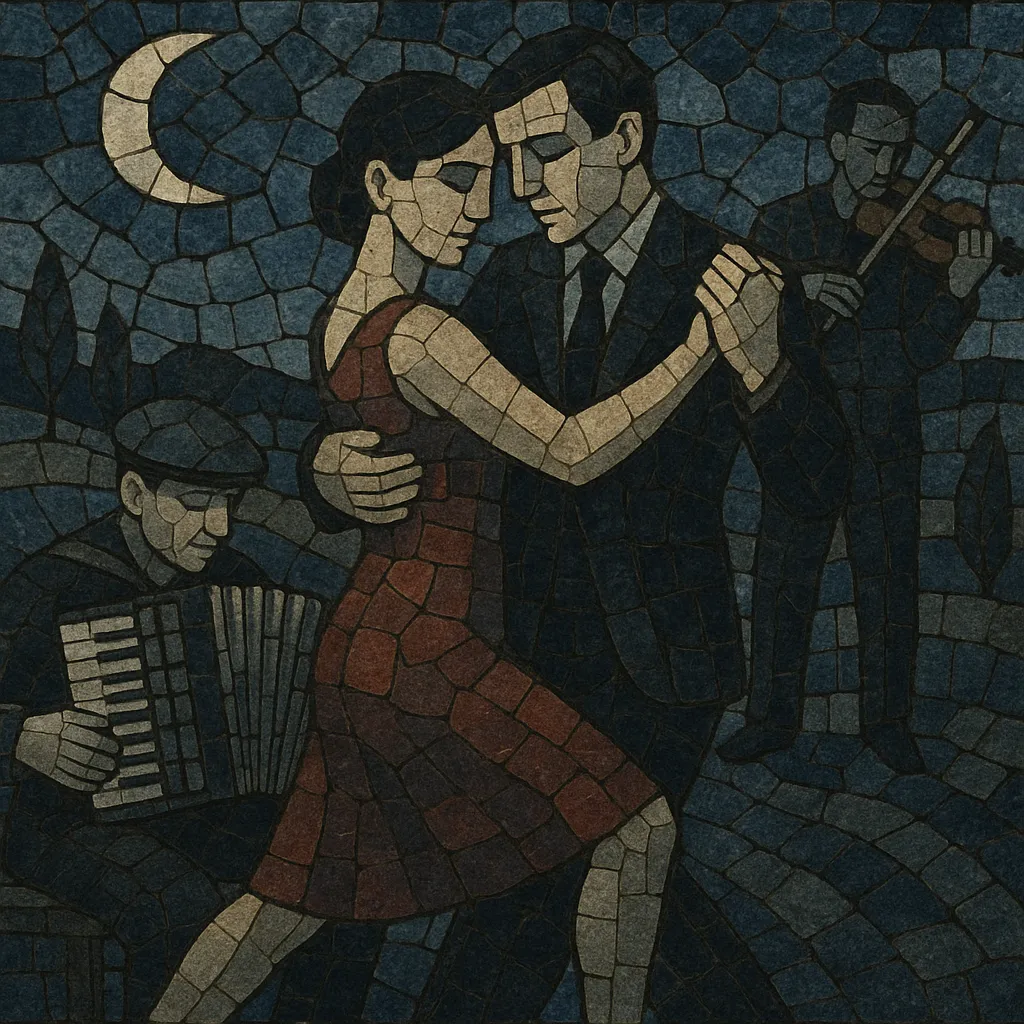Finnish tango is a distinctly Nordic interpretation of tango that favors minor keys, measured tempos, and a restrained, melancholic delivery. Rather than the flamboyance of Argentine tango, it emphasizes stoic vocal performances, lyrical sentiment, and a cool, almost nocturnal atmosphere.
Arrangements typically spotlight accordion (often taking the role of the bandoneon), violin, piano, and guitar, supported by upright bass and subtle percussion. The songs often dwell on themes of longing, nature, darkness, and distance—mirroring the Finnish concept of "kaiho" (yearning). It thrives in Finland’s dance pavilion tradition (lavatanssit) and remains culturally central through events like the Seinäjoki Tangomarkkinat.
Tango reached Finland in the early 1910s via continental Europe. Local composers and dance bands adapted the idiom to Finnish taste, folding in elements of schlager, waltz, and European light music. By the interwar years, a slower, minor-key, and lyrically introspective approach began to take hold in dance pavilions and on radio.
After World War II, Finnish tango blossomed into a national phenomenon. Songwriters such as Toivo Kärki and Unto Mononen shaped the genre’s hallmarks: plaintive melodies, rich yet uncluttered harmonies, and poetic lyrics. The definitive standard is Mononen’s "Satumaa" (1955), popularized by Reijo Taipale’s classic 1962 recording. Iconic vocalists—Olavi Virta, Eino Grön, and Taisto Tammi—cemented the style’s dignified, melancholic character.
While pop and schlager diversified Finnish charts, tango remained central to the dance pavilion circuit. The launch of the Seinäjoki Tangomarkkinat (1985) revitalized the tradition, crowning annual "Tango Kings/Queens" and creating national stars (e.g., Arja Koriseva, Sauli Lehtonen, Jari Sillanpää). Orchestral polish and studio production gradually modernized the sound without abandoning its essence.
Finnish tango continues as a living tradition: classic repertoire endures alongside new compositions, jazz and chamber crossovers, and international showcases. Ensembles like Tango-orkesteri Unto and successive Tangomarkkinat winners keep the music visible, while younger artists reinterpret standards with subtle modern touches.


